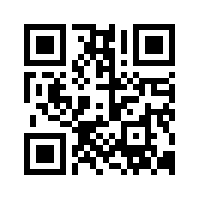Old URLs Don't Die... They Come Back to Haunt You
What do Heinz Ketchup, QR codes and adult Web sites have in common?
Apparently, everything.
QR codes are those two-dimensional barcodes you often see on ads or consumer products. Just like regular barcodes encode numeric information, QR codes encode full text. They often are used to reference Web addresses, or URLs. For example, the following QR code, when scanned with a mobile phone app, will link to this site:
Essentially, QR codes are an easy and reliable way to have users get to URLs from their phones without having to type in an address.
According to this article on The Verge, from 2012 to 2014 Heinz ran a special advertising campaign in Europe. Like most such campaigns, Heinz had set up a dedicated site and landing page. They then generated a QR code for the site and published it on ketchup bottles.
Once the campaign was over, with no use left for the domain, they let it lapse, after which it was picked up by... a pornography company.
What Heinz didn't consider was that someone actually might scan the code after the campaign was over. When a German man did just that, he expected to find an offer from Heinz, or, at worst, an indication that the offer had expired. What he did not expect to find was explicit pornography!
Of course, Heinz apologized... but how did it get into the problem in the first place?
First of all, it is important to understand that this is not unique to QR codes; these barcodes, like the one above, are just easy-to-read (for smartphone cameras) references to Web addresses, like the one in this browser right now. The exact same problem would have occurred if Heinz had put the address directly on the ketchup bottle and asked consumers to type it in.
The more important lesson here is the understanding that a URL is a gateway or an address that is tied to your brand for as long as it is out in public. Any time you use that address publicly, whatever is at that address is tied to your company's brand for as long as it is conceivably in use. That is not determined by the length of your campaign (in Heinz's case, 2012 to 2014), but rather by how long the address can be viewed and reviewed by the public. In this case, probably at least 5-6 further years, and probably more.
What should Heinz have done? What should you do for public addresses?
- Always view the linkage from the customer's perspective, not yours. You have zero control over how long the address will be viewed in the customer's mind as connected with you. Accept that, and maintain control over the asset for that long... and a little bit longer.
- Use subdomains. Heinz got into trouble because they set up a dedicated domain, for example, www.specialketchup.de for the purpose of this 2-3 year campaign. When it was over, the value of and need for the domain from Heinz's perspective was zero and thus let lapse. Assuming Heinz Company manages hundreds or thousands of such domains, it hardly is surprising that they culled what they no longer needed. On the other hand, if they had used www.specialketuchup.heinz.com, which is just a subdomain of heinz.com, the problem would have been avoided.
While specialketchup.de is viewed as a short-term and disposable asset, even if it really was not, heinz.com always will be under the control of Heinz, for as long as the company exists. Using a subdomain of heinz.com meant the publicly visible association with Heinz due to the address, and hence the QR code, forever would have been subsidiary to the permanent asset heinz.com, and never released and turned to something that ultimately damaged Heinz.
In actuality, Heinz got off easy. Someone could have grabbed the domain, set up a site that looked like Heinz's campaign, made lucrative offers, and Heinz would have been left holding the bag.
Summary
Digital assets and brand are no different than their physical counterparts. They need to be managed for as long as they are perceived to belong to you.
Technology operational processes directly impact your customer experience and brand.
Manage them, or they will manage you. Do you have them under control? Ask us.
